¶ Required knowledge
To understand this practical tutorial, it is highly recommended to make yourself familiar with the following concepts:
- Instrument Landing System - ILS (Instrument)
- Horizontal Situation Indicator
¶ Setting up the aircraft
¶ Chart reading
Each ILS approach, during instrument flight rules (IFR) operations, is published on an instrument approach procedure chart named IAC chart.
This chart shall include:
- Radio frequencies
- Navigation aid and course
- Descent profile
- Prescribed minimum visibility requirements.
¶ Practical case
During the approach phase of your flight, you must configure your aircraft for the ILS approach:
- Take the ILS frequency from charts : configure your radio navigation receiver NAV1
- Take the ILS course and interception altitude of the localizer from charts : configure the course and configure your descent to this altitude
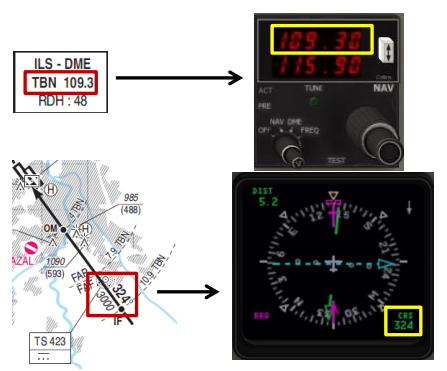
¶ Perform the ILS approach
¶ Before joining the localizer
Before joining the localizer, you must check the following points:
- Aircraft speed shall be reduced between 140KT to 160KT (do not approach with a too high speed)
- Aircraft descent altitude shall be set to the interception altitude of the localizer published on charts.
- Aircraft flaps are set to APPROACH position (usually only 2 positions for a dual propeller)
- If you want to perform an automatic ILS approach, the APP button shall be activated
When performing an ILS approach, you must establish the localizer before the glide path.
You can consider established when the indicator is staying at the central position ± 1 bullet.
If you are far from the localizer path and glide path, ILS indicators are stayed to maximum deviation and remains at this position (like the image here under).
If you are close to the path, the indicator shall move to the central position.
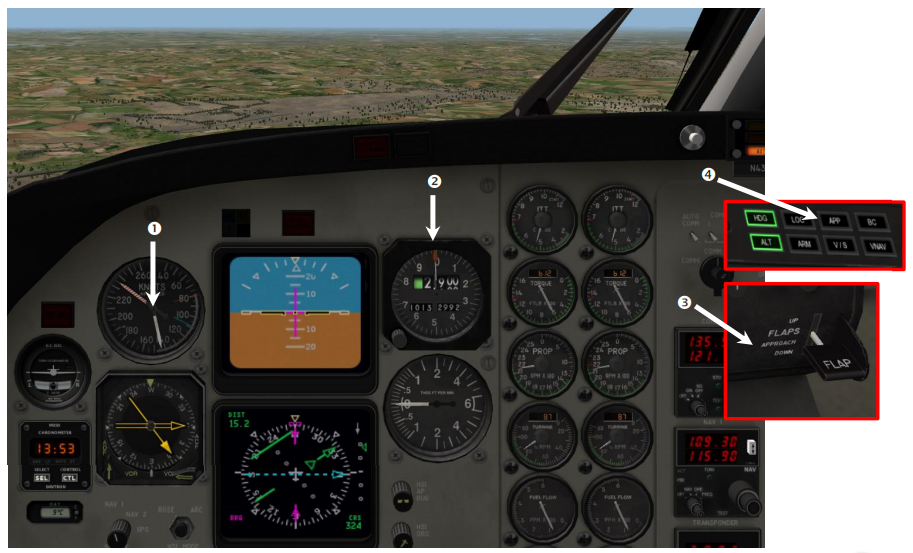
When the localizer indicator is on the left that means that the localizer path is on the aircraft's left, or the aircraft is on the right of the localizer path.
An ILS approach can be performed manually by the pilot. The use of autopilot is not mandatory
¶ Establishing the localizer
When the localizer indicator is moving to the central position, you must turn toward the runway.
You must handle your heading in order to keep the localizer indicator near the centre position.
If you do that, you will keep the runway alignment until the touchdown.
In the picture here under, you can notice:
- The localizer needle is aligned with the localizer course (red). You are established on the localizer.
- The glide indicator is still at the maximum deviation (green). You are still below the glide path.
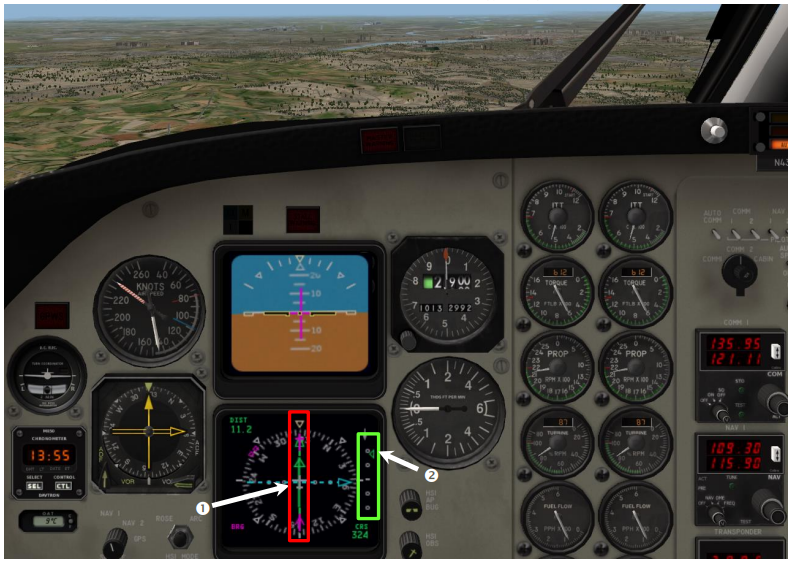
The runway can be seen now (depends on the weather, distance)
When the glide indicator is on the top that means that the glide path is above the aircraft or the aircraft is below the glide path.
During normal ILS approach, you must always intercept and establish the localizer when the glide path indicator is on top or above the middle (like the image above n°2).
The spoilers can be armed at this stage.
¶ Establishing the glide path
When the glide path indicator is moving to the central position, you must initiate your descent:
- Reduce the power and speed down to 120kt (be careful to monitor your speed permanently)
- Set the flaps to FULL or DOWN position
- Set gear lever to down position. And check that the gear feedback indicators are green
- Maintain localizer and glide path indicator near the centre position.
- Check your vertical speed indicator. The approximate value can be calculated for 3-degree descent angle: ground speed x 5. (example: 120kt x 5 = 600ft/min).
You must handle your pitch and power in order to keep the glide path indicator near the centre position. If you do that, you will maintain a constant descent until the short final.
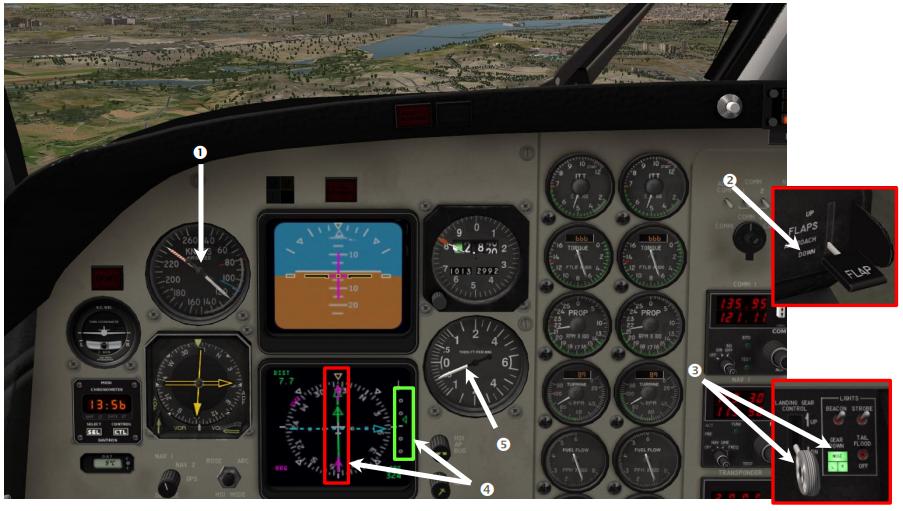
When localizer and glide path indicator are located near the middle of the indicator, you can consider that the ILS is established.
In this type of aircraft, there is usually no auto-throttle equipment. The pilot shall operate and adjust the throttle manually.
¶ Approaching decision altitude
When you will be on short final, it is time to decide to land or to go around, after Outer Marker:
- Check on your charts the decision altitude (on chart you will find mainly ILS CAT I decision altitude)
- Check that aircraft speed is stabilized at the target speed
- When reaching the decision altitude, you need to decide to land or to go around. At this time, you must disconnect the autopilot if it is still engaged
At decision altitude, if you see the runway or 3 consecutives approach lights on the ground, you can continue the ILS approach, if you don't have this visual reference, you must go around.
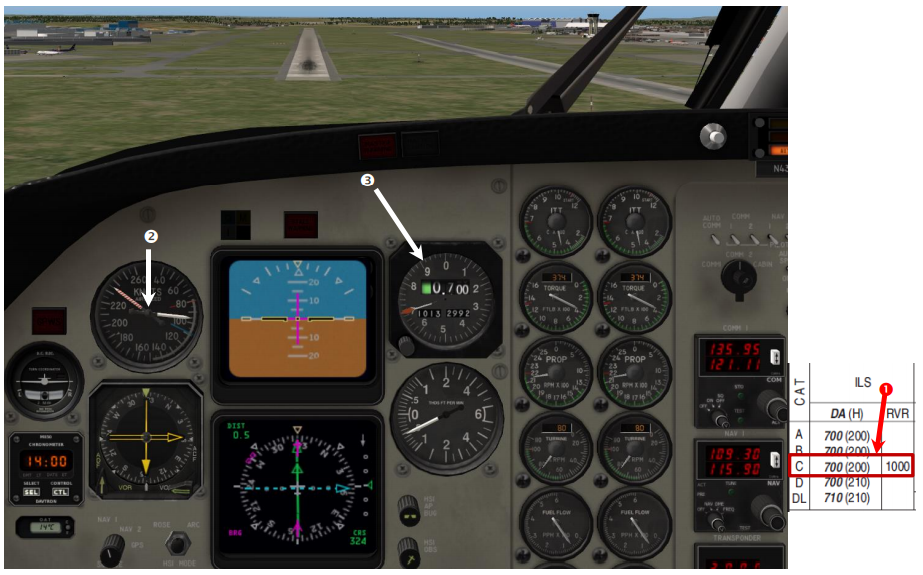
The aircraft must be stabilized on final in landing configuration at least 1000ft above the ground.
The pilot in command shall not hesitate to go around if his aircraft is not stabilized on final, or approach speed is excessive.
A full article is available about recommended elements of a stabilized approach
¶ Descent check
When stabilized on the ILS, it is time to check your approach progress:
- Locate on your charts the intermediate altitude check mainly located at outer marker (OM on chart).
- Check the altitude when reaching this point (it can be a DME distance or navigation aid reference)
- Set final approach speed. Here set 90 to 95kt.
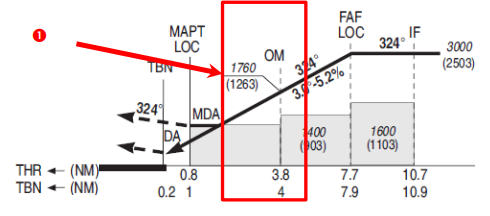
In the example, the altitude to check is 1760ft at 4NM DME of TBN radio navigation aid.
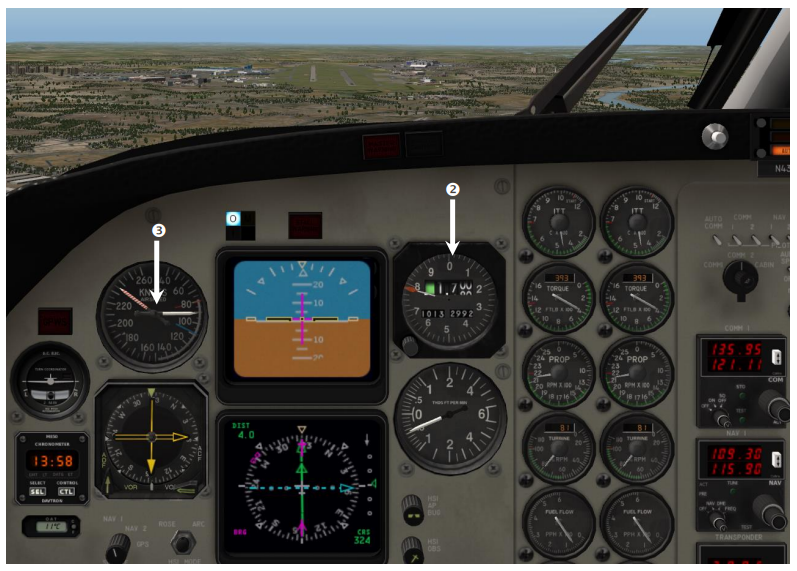
- None
- VID 150259 - Creation
- VID 200696 - Wiki integration
- VID 496402 - Wiki.js integration